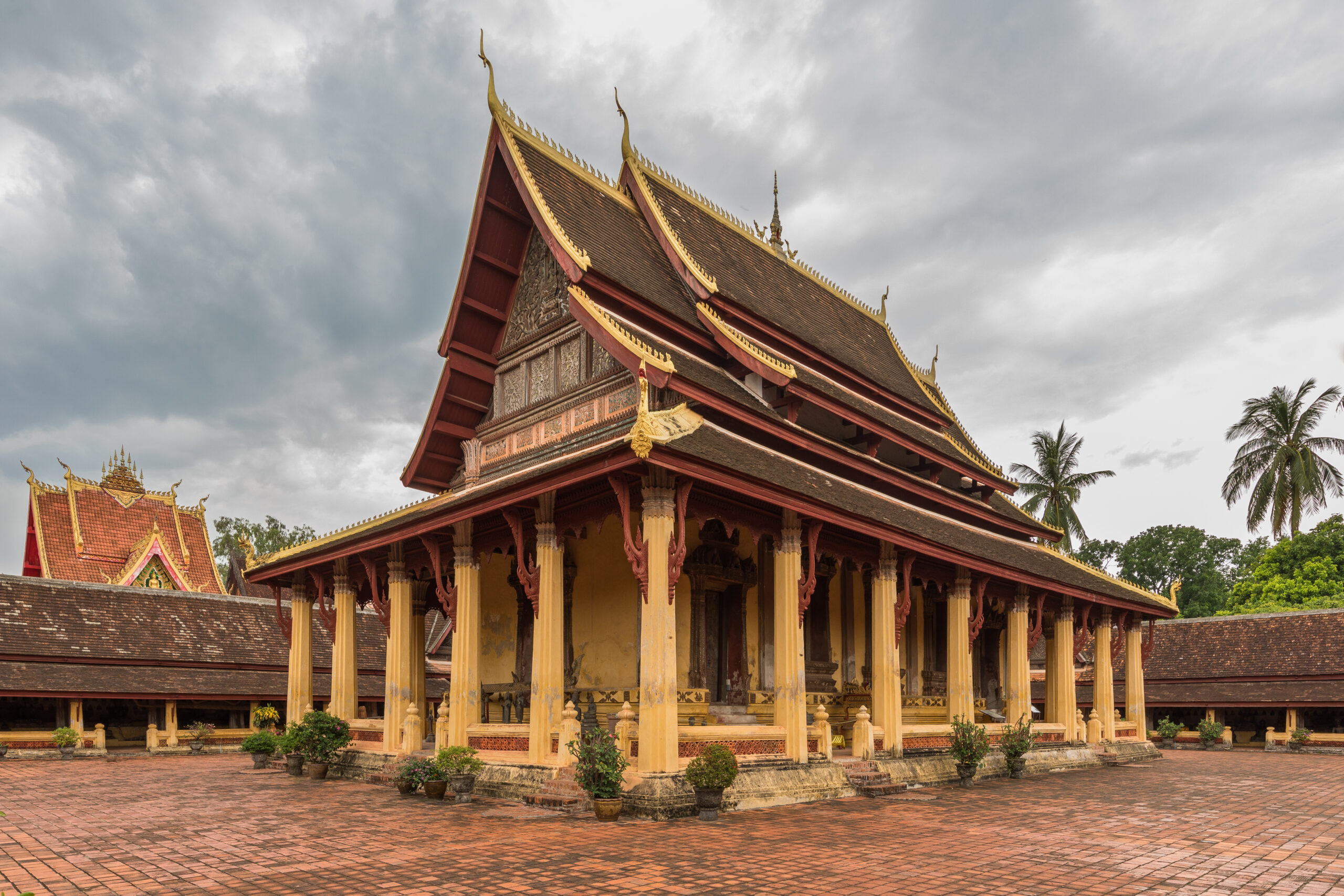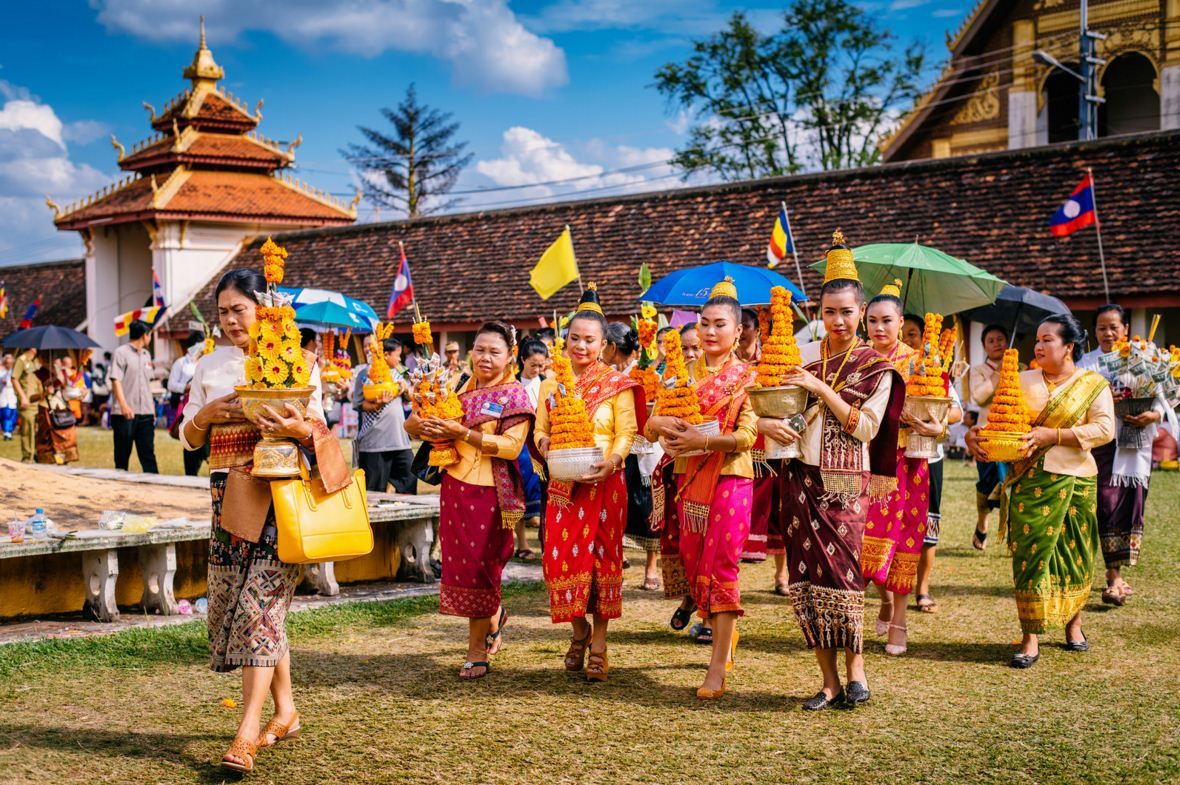1. Overview
Buddha Park, also known as Xieng Khuan, is an impressive sculpture park located 25 kilometers southeast of Vientiane, Laos, along the Mekong River. Established in 1958 by Luang Pu Bunleua Sulilat, the park features over 200 Hindu and Buddhist statues, blending religious art and cultural symbolism. The park’s giant sculptures of Buddha, Hindu deities, and mythical creatures make it a unique attraction in Laos.
Name: Buddha Park (Xieng Khuan)
Location: Mekong Riverside, Vientiane, Laos
Coordinates: 17.91229° N, 102.7654° E
Best visited: While exploring Vientiane’s cultural landmarks or seeking a distinctive artistic experience.
2. History of the Place
Buddha Park has a fascinating history tied to the cultural and religious landscape of Laos:
- Establishment: Founded in 1958 by Luang Pu Bunleua Sulilat to create a fusion of Buddhist and Hindu artistic expressions.
- Artistic Medium: Constructed mainly using reinforced concrete, allowing intricate designs and large sculptures.
- Diverse Sculptures: The park contains over 200 statues, including depictions of Buddha, Hindu deities, demons, and mythological creatures.
- Giant Reclining Buddha: The park features a 40-meter-long reclining Buddha, a central point of the park.
- The Giant Pumpkin Structure: A three-tiered structure symbolizing hell, earth, and heaven, accessible by a narrow staircase through a demon’s mouth.
- Cultural Fusion: The park blends religious traditions, showcasing both Buddhist and Hindu influences.
- Artistic Vision: The creation of Bunleua Sulilat, aiming to provide a space for the public to experience both religious art and architecture.
- Post-Revolution Transition: After the 1975 revolution, the park was repurposed as a tourist attraction under the Lao government.
- Renovations: The park underwent major renovations in 2017 to enhance visitor facilities and the walkways.
- Sister Park in Thailand: Bunleua Sulilat created a counterpart to Buddha Park, Sala Keoku, in Nong Khai, Thailand.
3. Location
4. What Makes “Buddha Park” Popular?
Buddha Park is popular for its distinctive sculptures and cultural significance:
- Unique Sculptures: The park features an eclectic mix of Hindu and Buddhist statues, each with intricate designs and symbolic meanings.
- Interactive Structures: Visitors can explore the interiors of structures like the giant pumpkin, offering a hands-on cultural experience.
- Cultural Insight: A blend of Buddhist and Hindu traditions, offering a glimpse into the spiritual practices and beliefs of Laos.
5. Overall Ratings (1 to 5 Stars)
Buddha Park is highly regarded by visitors for its artistic, cultural, and spiritual offerings:
Overall Rating: ⭐⭐⭐⭐⭐ (5/5)
Cultural Significance: ⭐⭐⭐⭐⭐ (5/5)
Authenticity: ⭐⭐⭐⭐⭐ (5/5)
Atmosphere & Environment: ⭐⭐⭐⭐⭐ (5/5)
Accessibility: ⭐⭐⭐⭐☆ (4/5)
Tourist Friendliness: ⭐⭐⭐⭐⭐ (5/5)
6. Weather
Vientiane experiences a tropical climate with distinct wet and dry seasons:
Best Time to Visit: November to February (cooler, dry season)
Temperature Range: 25–35°C (77–95°F)
Wet Season: May to October
Rain Gear: Recommended during the wet season.
7. Nearest Five Hotels
For visitors seeking accommodation near Buddha Park, here are five options:
- Sabaidee@Lao Hotel: Comfortable and centrally located with convenient access to major attractions.
- Vientiane Plaza Hotel: Offers modern amenities and is a short drive from Buddha Park.
- Green Park Boutique Hotel: A blend of traditional and contemporary styles, perfect for a peaceful stay.
- City Inn Vientiane: A budget-friendly option with easy access to Buddha Park.
- Ibis Vientiane Nam Phu: Centrally located with essential amenities for travelers.
8. Timings
Buddha Park operates during standard hours:
Opening Hours: 8:00 AM – 5:00 PM daily
Best Time to Visit: Early morning or late afternoon to avoid crowds and enjoy a more relaxed experience.
9. Time Required to Visit
Visiting Buddha Park typically requires a moderate amount of time:
Visit Duration: 1–2 hours
Ideal for: History enthusiasts, art lovers, and those interested in exploring Lao culture and spirituality.
10. Entry Fees & Ticket Booking Details
There is an entry fee to visit Buddha Park:
Entry Fee: 15,000 LAK (approximately $1.50)
Booking: Not required for general visits.
11. Things to See & Do
Visitors can explore the fascinating sculptures and structures within the park:
- Explore: The over 200 sculptures depicting various religious figures and mythological beings.
- Experience: Climb through the giant pumpkin to explore the symbolic representations of hell, earth, and heaven.
- Photography: Capture the stunning, surreal landscape and statues, especially during the golden hours of sunrise and sunset.
12. Best Time to Visit
The best time to visit is during the cooler dry season:
Best Time: November to February (cooler, dry season)
Time of Day: Early morning or late afternoon for optimal light and fewer visitors.
13. Nearest Parking Spots
Parking is available near Buddha Park for those arriving by car:
Street Parking: Available near the park entrance.
Public Parking: Public parking lots are located near the park.
Alternative: Tuk-tuks and bicycles are convenient for getting around Vientiane.
14. Tips for Visitors
- Dress Comfortably: Wear comfortable clothing and shoes, as you’ll be walking around the park.
- Stay Hydrated: The weather can get hot, so bring water and stay hydrated.
- Respect the Site: Be respectful of the religious significance of the park and its sculptures.
- Photography: Be considerate when taking photos, especially near religious figures.
15. How to Reach the Place
Buddha Park is located a short drive from central Vientiane and can be easily reached by foot, tuk-tuk, or bicycle:
By Tuk-Tuk: Convenient and affordable for short trips.
By Bicycle: A great way to explore Vientiane at your own pace.
By Foot: A longer walk, but an option if you enjoy exploring the city on foot.
Taxi: Available for longer trips or if you prefer a direct route.
16. Nearby Attractions to Combine for the Visit
While visiting Buddha Park, consider exploring other nearby attractions:
- That Luang Stupa: The most significant Buddhist monument in Laos.
- Patuxai (Victory Monument): A triumphal arch offering panoramic views of the city.
- COPE Visitor Centre: Learn about the impact of unexploded ordnance in Laos.
- Mekong Riverfront: A scenic area for shopping, dining, and relaxing along the river.
- Wat Si Saket: The oldest surviving temple in Vientiane.


